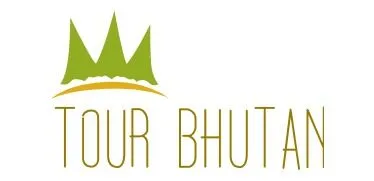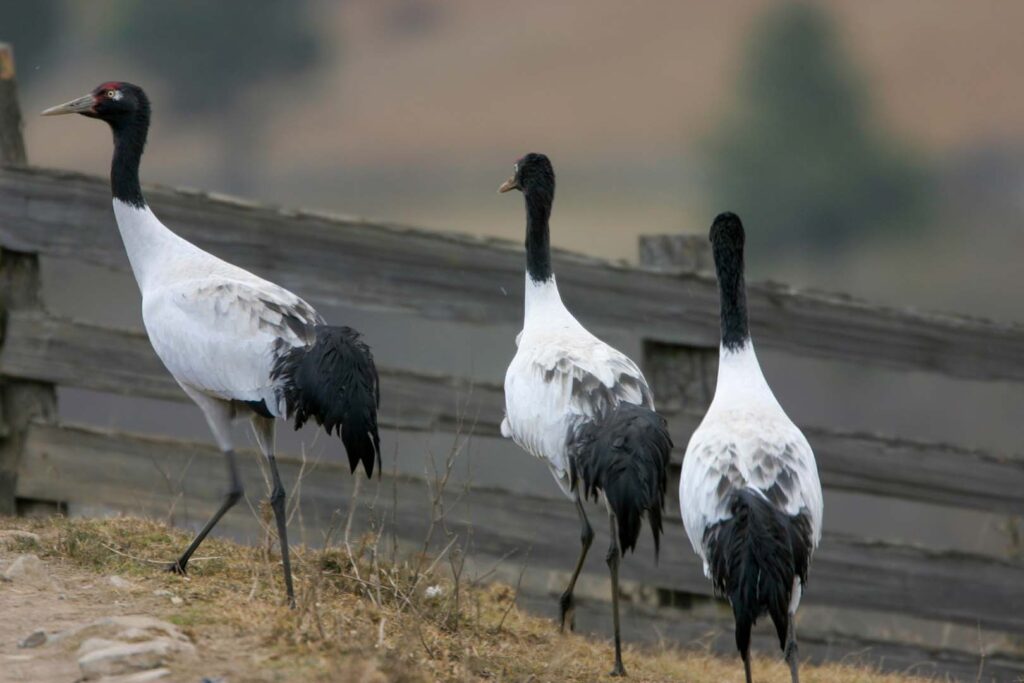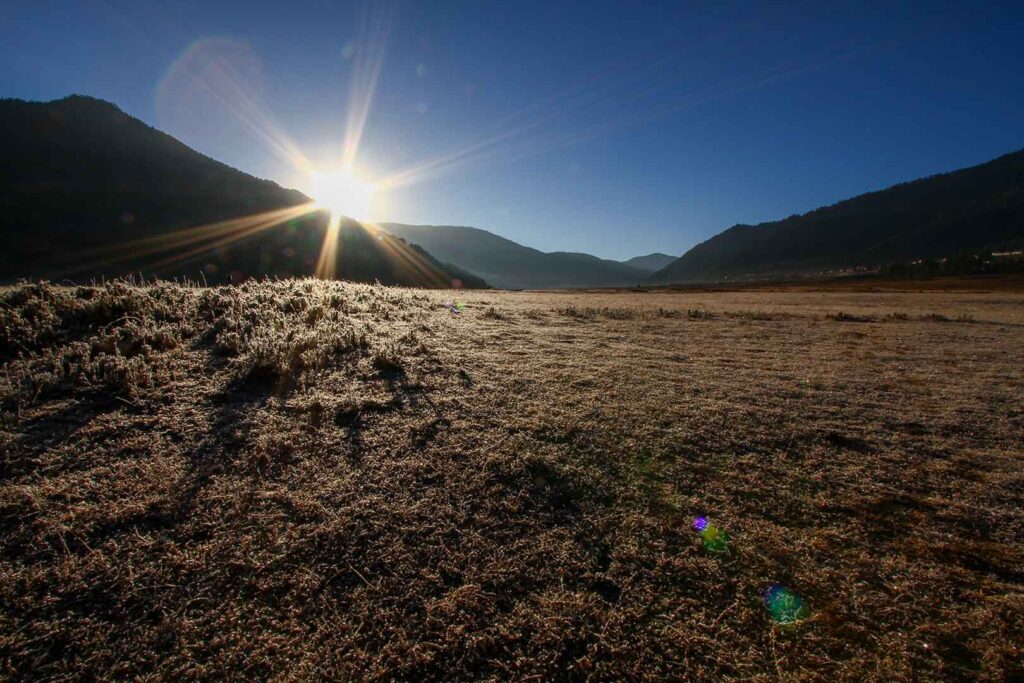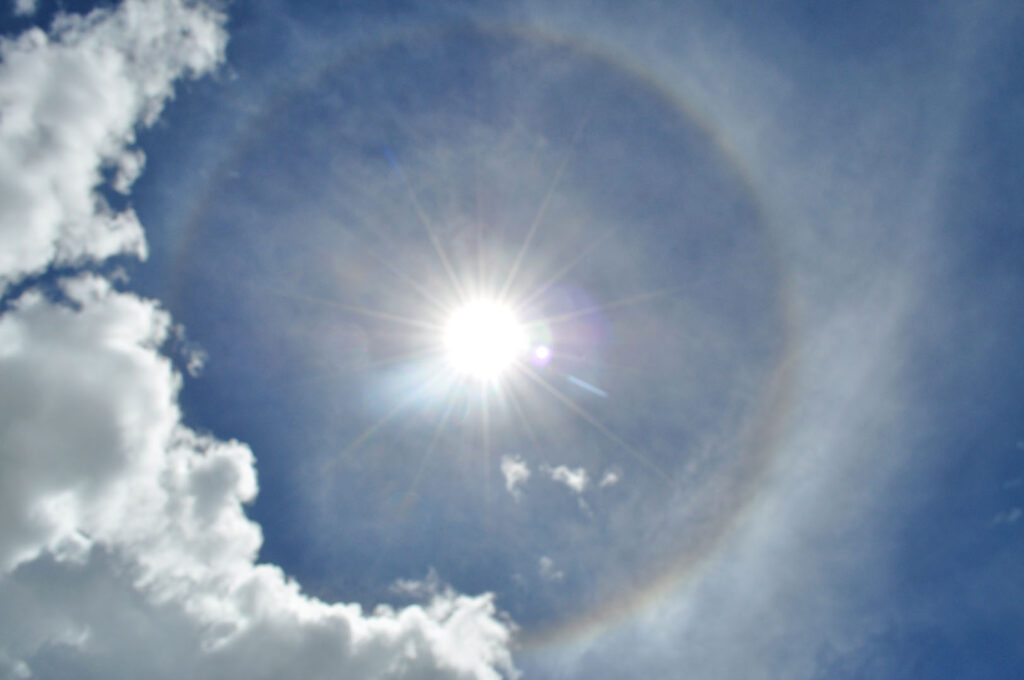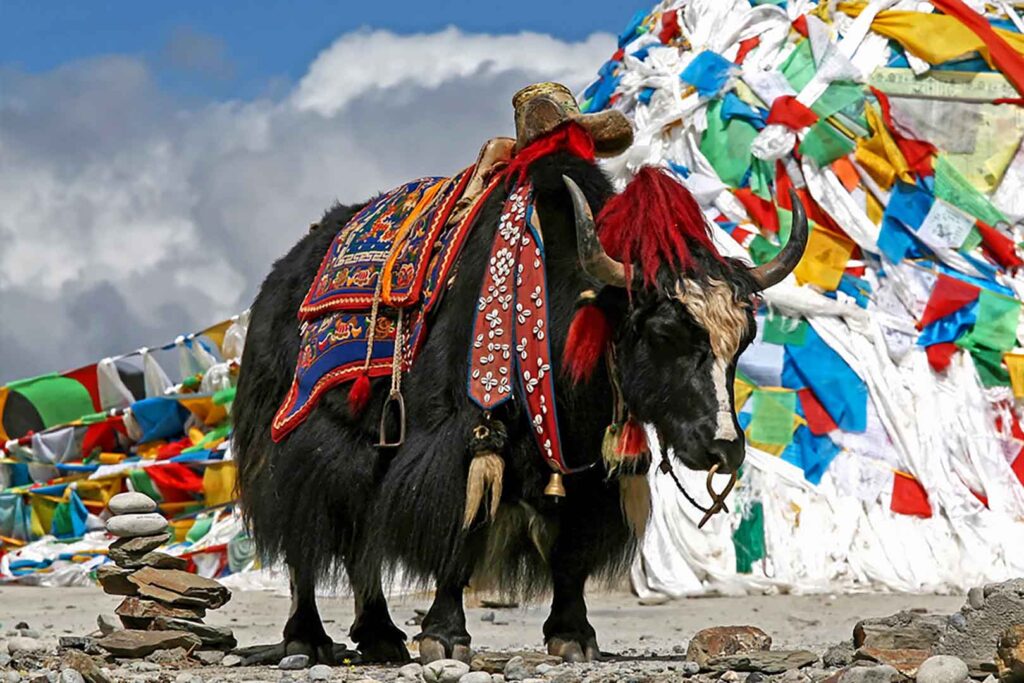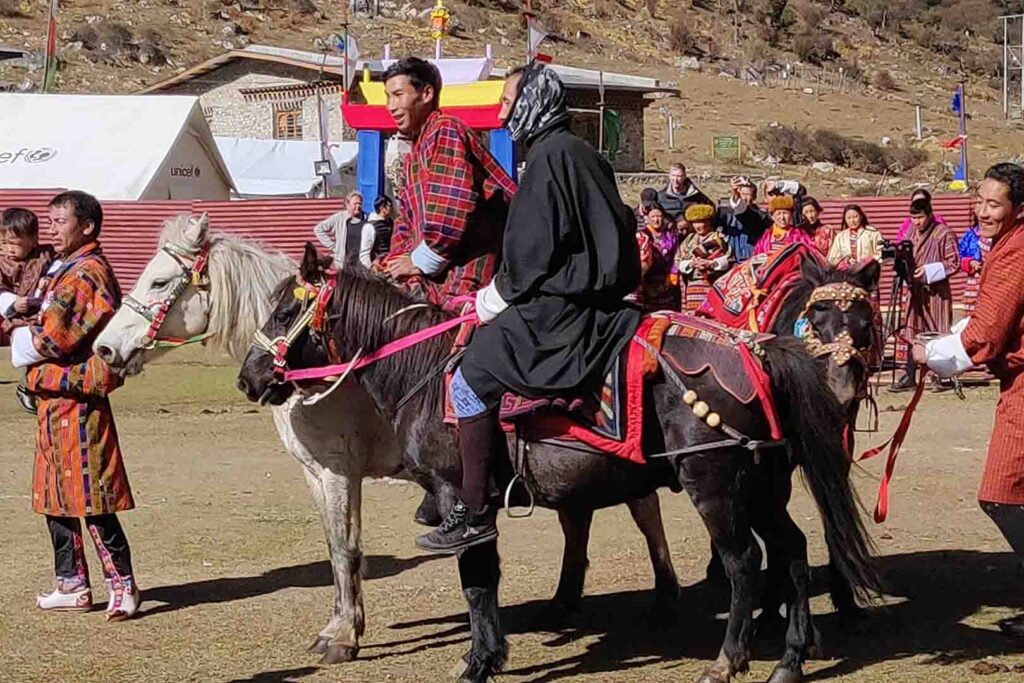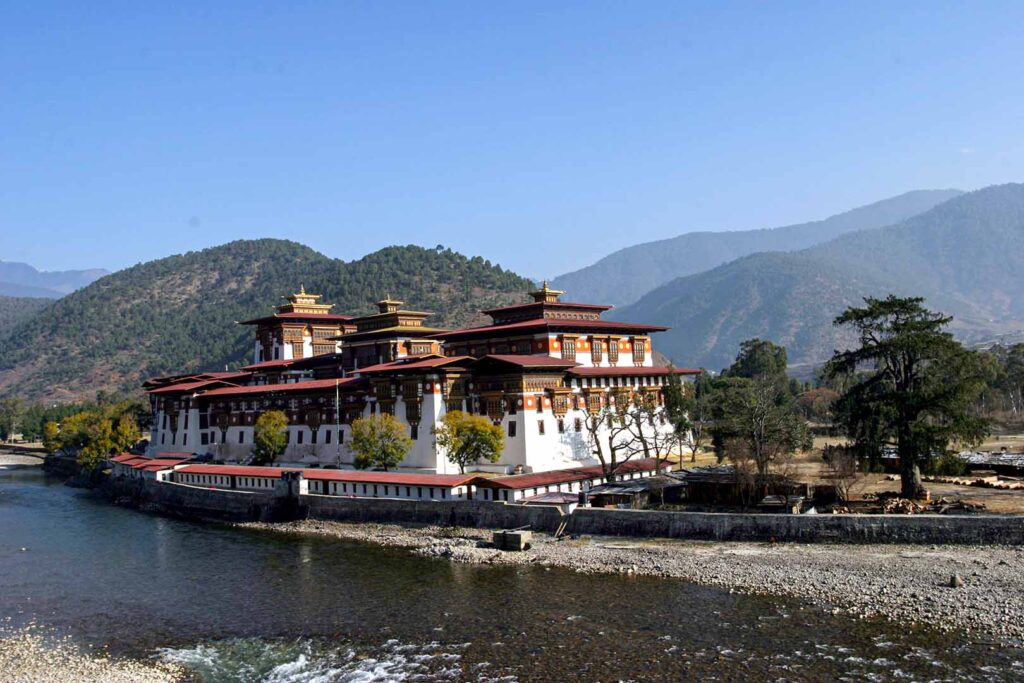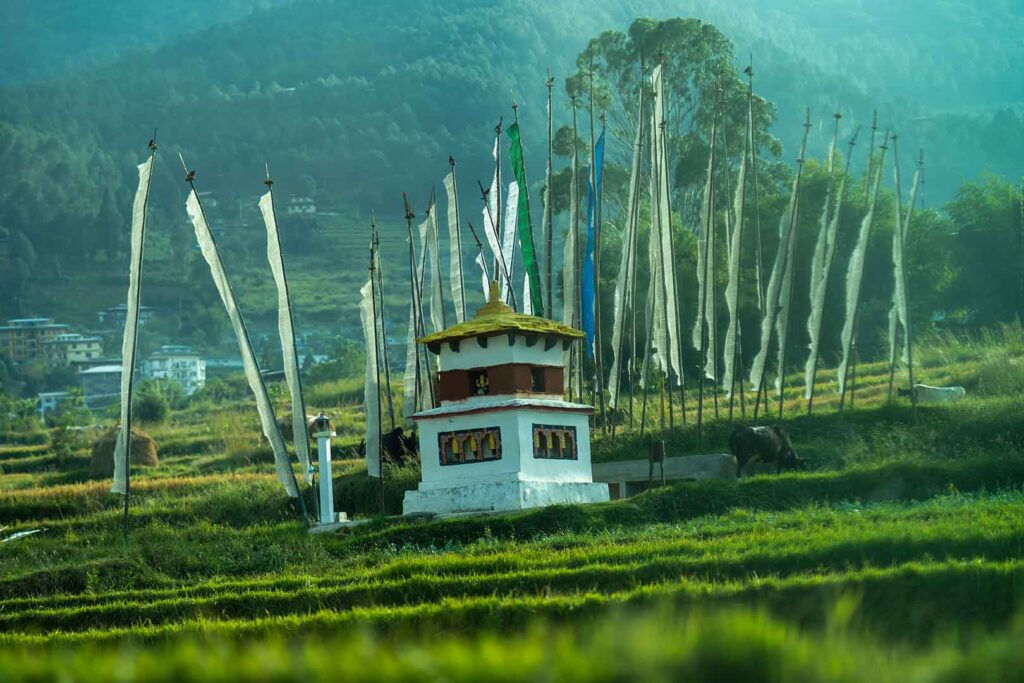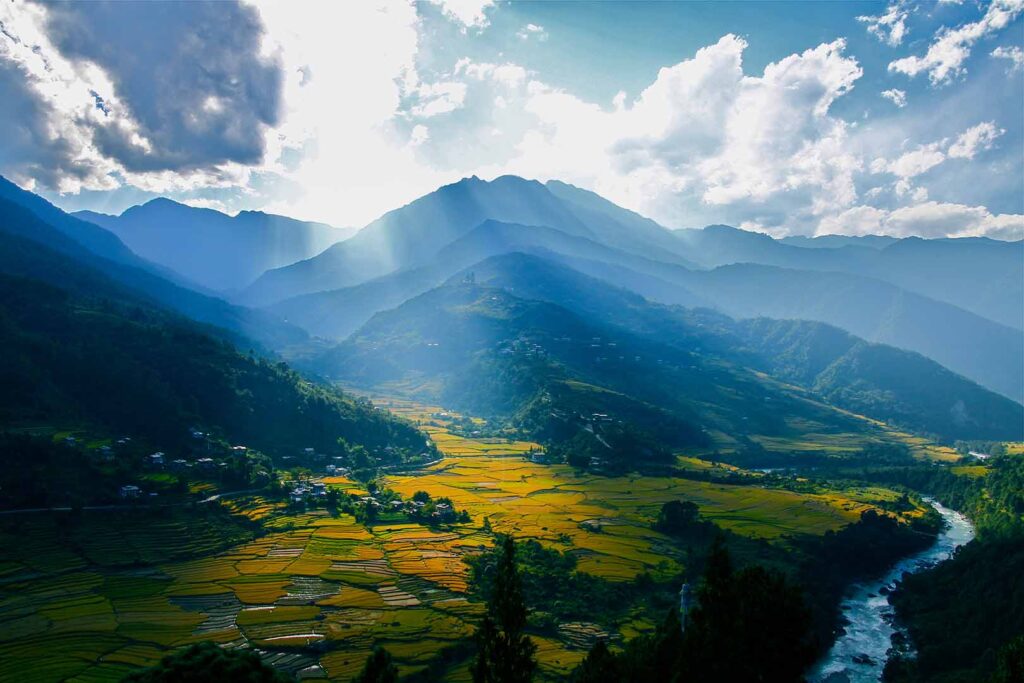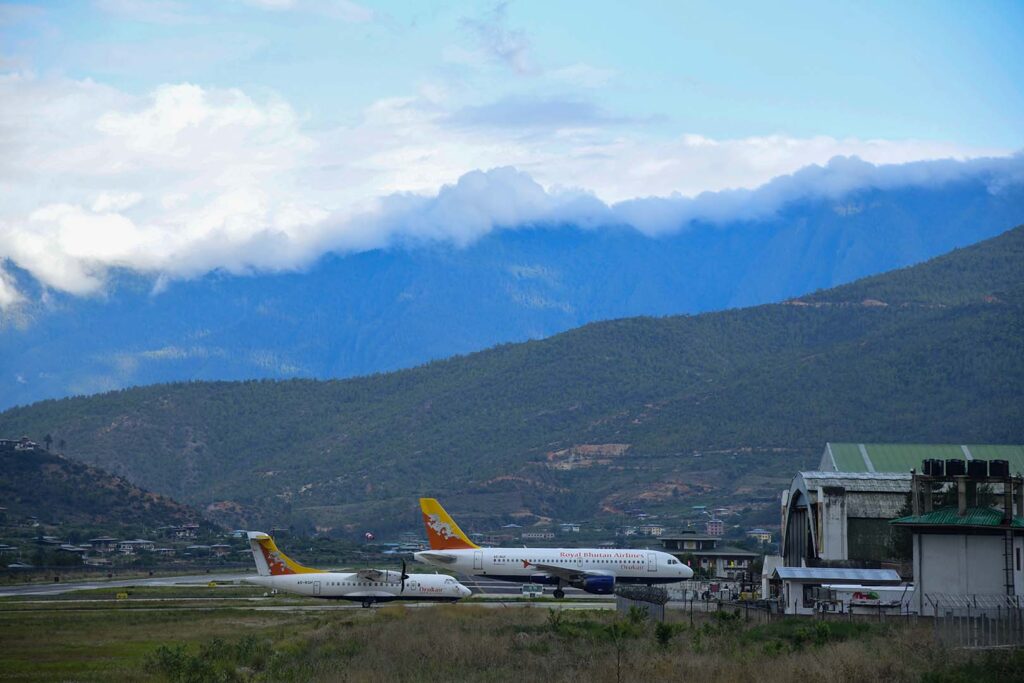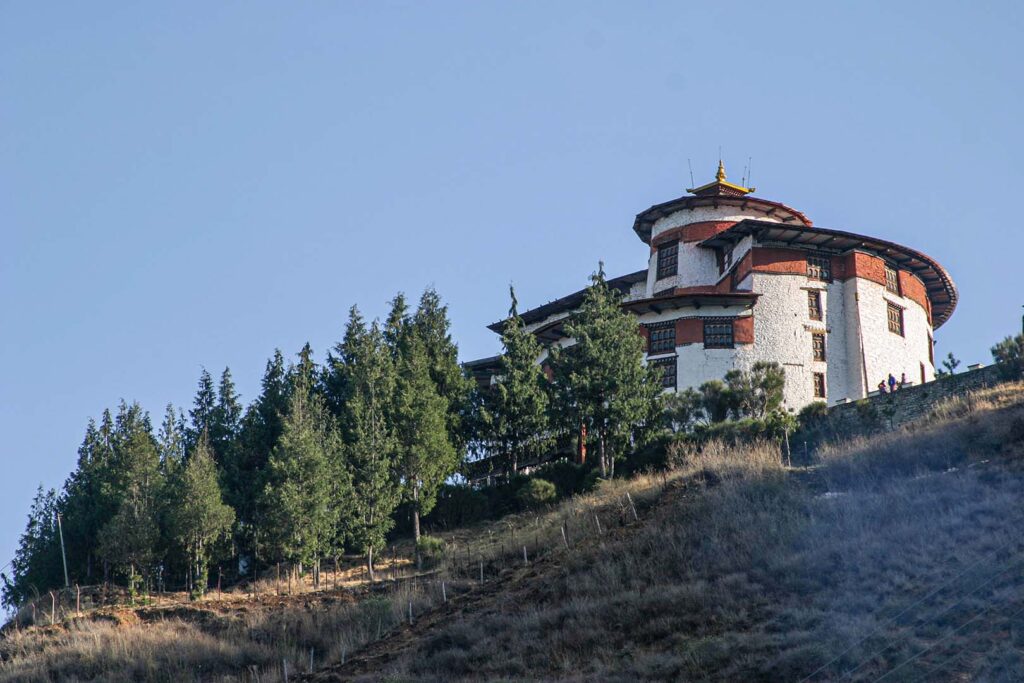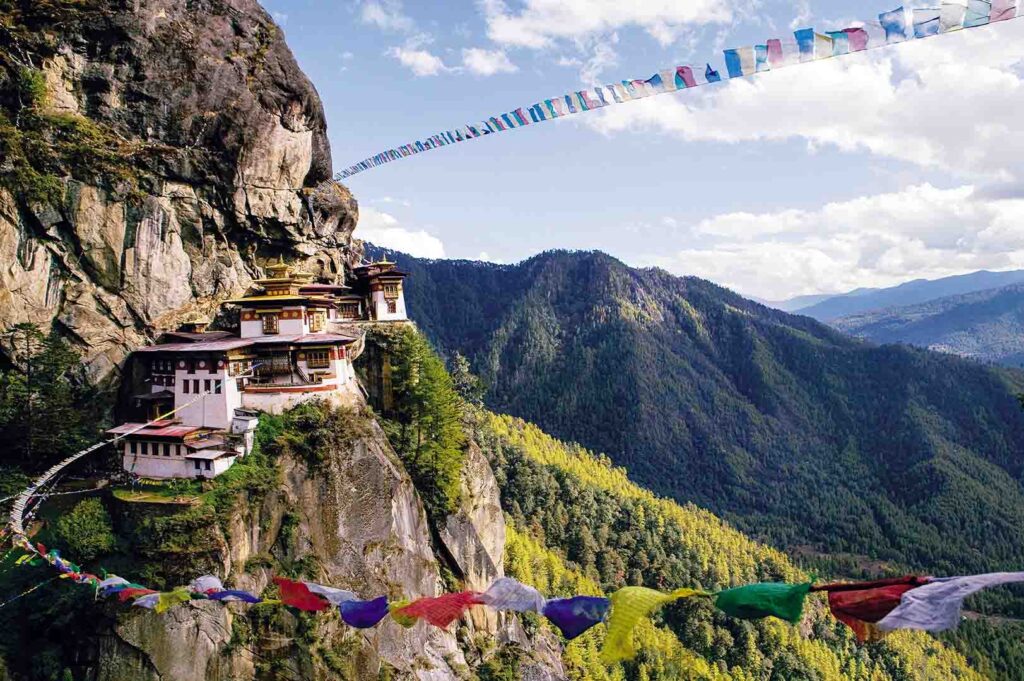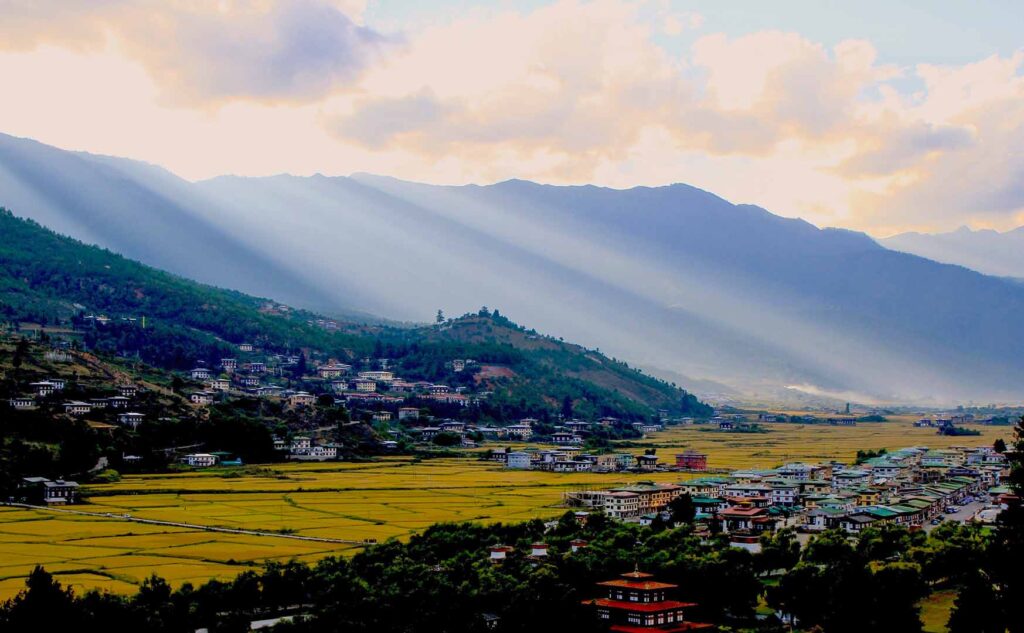It is a 3-day trek at relatively low elevations, which visits several remote villages. This is not a very popular Trek but very easy. This trek can also be done with kids above 6 years.
The Trek Starts from Phobjikha. Phobjikha Valley, at 3000 meters, is one of the few glacier valleys in Bhutan. It is the chosen home of the rare black-necked cranes which migrate here in winter from the Tibetan Plateau. The crane festival is the highlight of this trip
The valley of Gangtey is one of the most beautiful places in Bhutan and the Gangtey Gompa monastery is the only Nyingmapa monastery on the western side of the Black Mountains. This moderate trek passes through the villages of Gogona and Khotokha, through meadows and fields, and a forest of juniper, magnolia, and rhododendrons. One of the finest low-level treks in Bhutan. The valley also offers a beautiful 1-hour Hike starting from the Monastery to your Hotel. Check Gangtey Nature Hike
Trek Highlight
- Phobjikha Valley: Walk through the picturesque valley, known for its sweeping vistas, rolling hills, and lush meadows. The valley is a designated conservation area due to its ecological importance.
- Panoramic Views: Enjoy breathtaking views of the Himalayan ranges and the serene beauty of the valley’s natural surroundings.
- Birdwatching: The Phobjikha Valley is a winter habitat for the endangered black-necked cranes. From late October to early February, you can observe these majestic birds in their natural environment.
- Conservation Efforts: Learn about local conservation efforts to protect the cranes and their habitat, enhancing your understanding of Bhutan’s commitment to preserving its wildlife.
- Local Villages: Interact with the friendly villagers in traditional settlements, gaining insights into rural Bhutanese life and customs. Also, check Gangtey Festival
- Accessible Trekking: Suitable for trekkers of all levels, the Gangtey Trek offers gentle slopes and well-marked trails, making it an ideal introduction to trekking in Bhutan. Suitable for Kids and Families also.
Gangtey Trek Details
- Duration: 2-3 days
- Distance: Approximately 16 kilometers
- Best Time to Trek: Spring (March to May) and autumn (September to November) for clear skies, mild temperatures, and black-necked cranes in autumn and winter.
- Start and End Points: The trek typically starts and ends in the Phobjikha Valley, making it convenient for travellers.
Gangtey Trek Itinerary
Day 01 Arrival at Paro
When you arrive at Paro Airport, a representative from Tour Bhutan will be there to welcome you. They will assist in transferring you to your hotel. After enjoying a delicious lunch, your first stop will be at Ta Dzong, an ancient watchtower that now serves as the National Museum. Just below the museum, you’ll find the majestic Paro Rimpung Dzong, the heart of both civil and religious authority in this valley. A short stroll will lead you to the dzong’s base and a charming traditional cantilevered bridge. In the evening, you will proceed to Thimphu. You’ll spend the night in a hotel and enjoy a delightful dinner
The day commences with a visit to the National Memorial Chorten, constructed in 1974 to honor the late King Jigme Dorji Wangchuk, and the Dupthop Lhakhang, one of the few remaining nunneries in Bhutan. Next on our itinerary is a stop at the National Library, home to ancient Buddhist manuscripts, and the Painting School, where the traditional art of Thangka painting (sacred Buddhist religious scrolls) is meticulously preserved and taught.
Following lunch, we’ll journey to the Traditional Medicine Institute, where medicines are crafted using age-old methods. Our exploration continues with visits to Changangkha Lhakhang, the Takin Preserve Center, and a scenic viewpoint. In the evening, we’ll pay a visit to the Tashichho Dzong, which serves as the seat of the national government and the Central Monastic Body. This remarkable structure also houses the summer residence of the Je Khenpo, the Chief Abbot of Bhutan.
Our day concludes with a trip to Simtokha Dzong, the oldest dzong in Bhutan, constructed by Shabdrung in 1627. Finally, we’ll explore the Handicrafts Emporium and have the opportunity for souvenir shopping in Thimphu’s charming shops before retiring for the night at our hotel.
After having breakfast, we will embark on a journey to Punakha via the scenic Dochula Pass. Along the way, we will make a brief stop to visit Chimi Lhakhang, also known as ‘the Temple of Fertility,’ where people seeking blessings for fertility come to pray.
Once we arrive in Punakha, our first destination will be Punakha Dzong, a magnificent structure built in 1637 by Shabdrung Ngawang Namgyal. For many years, it served as the seat of the Government, and it was named Druk Pungthang Dechen Phodrang, which means ‘Palace of Great Happiness.’ The dzong houses preserved war materials captured during the battle with Tibetans. Punakha continues to be the winter residence of Je-Khenpo, and it was here that King Jigme Dorji Wangchuk convened the new national Assembly in 1952.
After a satisfying lunch, we will drive for approximately 2 hours to reach Gangtey, where we will spend the night in a hotel.
The trail meanders upward, gently climbing through fields before reaching the Tselela Pass, where we’ll stop for lunch. Following the pass, the trail gradually descends through a forest featuring juniper, bamboo, magnolia, and rhododendron. After a brief final ascent, we’ll arrive at Gogona village. The residents of Gogona were originally nomadic people, and they speak a unique language called ‘Jopkha,’ which is the language of the nomads. Distance 15 km, about 6 – 7 hours.
In the morning, you will ascend a gradual slope to reach Shobjula, situated at an elevation of 11,155 feet, where we’ll pause for lunch. Subsequently, the trail descends into the spacious Khotokha valley, which serves as a summer retreat for the people of Sha, a district under Wangduephodrang. Distance 15 – 16 km. Time about 6 – 7 hours.
A short ascend leads to Mulaila pass (9200ft.) then the path descends through ever-changing vegetation till the bridge in Wangdi Phodrang. Your trek ends here at. Overnight at the guesthouse.
Drive to Thimphu. Thimphu is about 2.5 hours drive from Wangdi. Thimphu is the most crowded capital in Bhutan with about 135000 people living in the city. If time permits we visit memorial chorten built in the memory of Third King, Folk Heritage museam and 13th Arts and Crafts School.
After Lunch, Excursion to Cheri Monastery. Dinner and over night in Hotel.
Todays ends the Gangtye Trek. Our team from Tour Bhutan will assist you to Airport and see you off.
